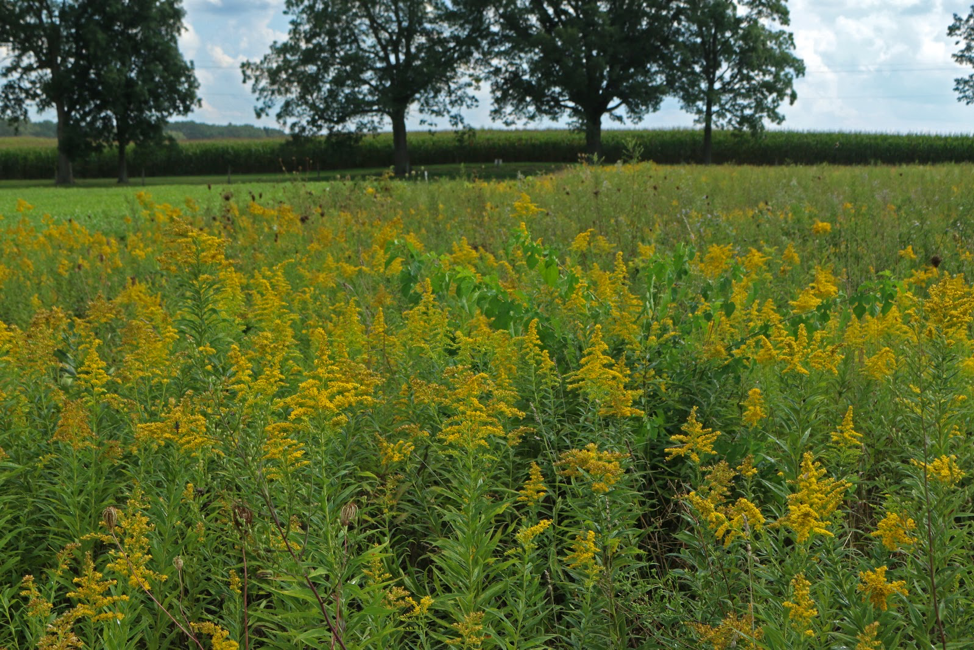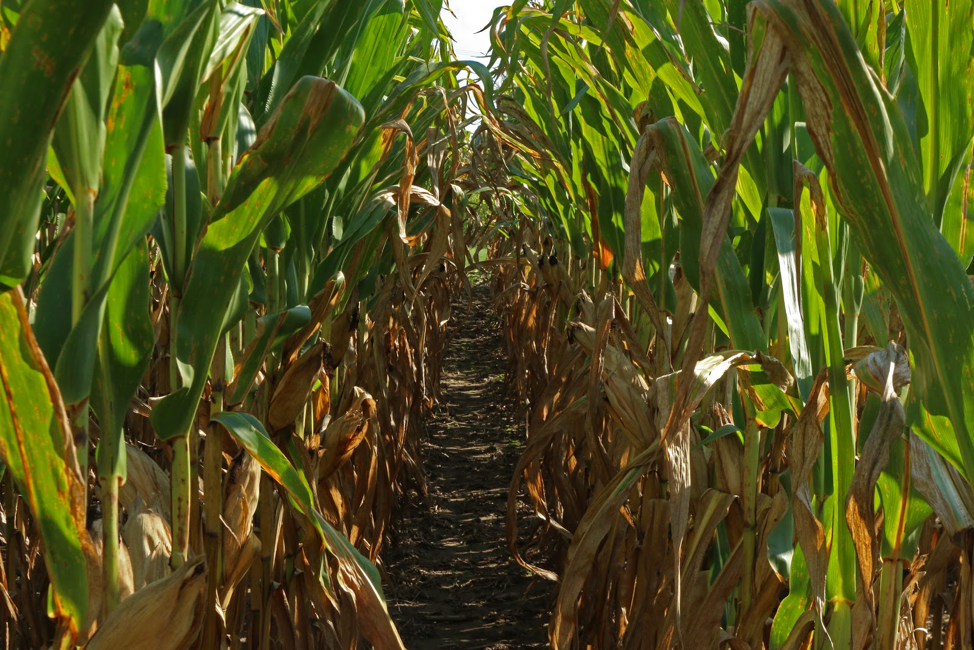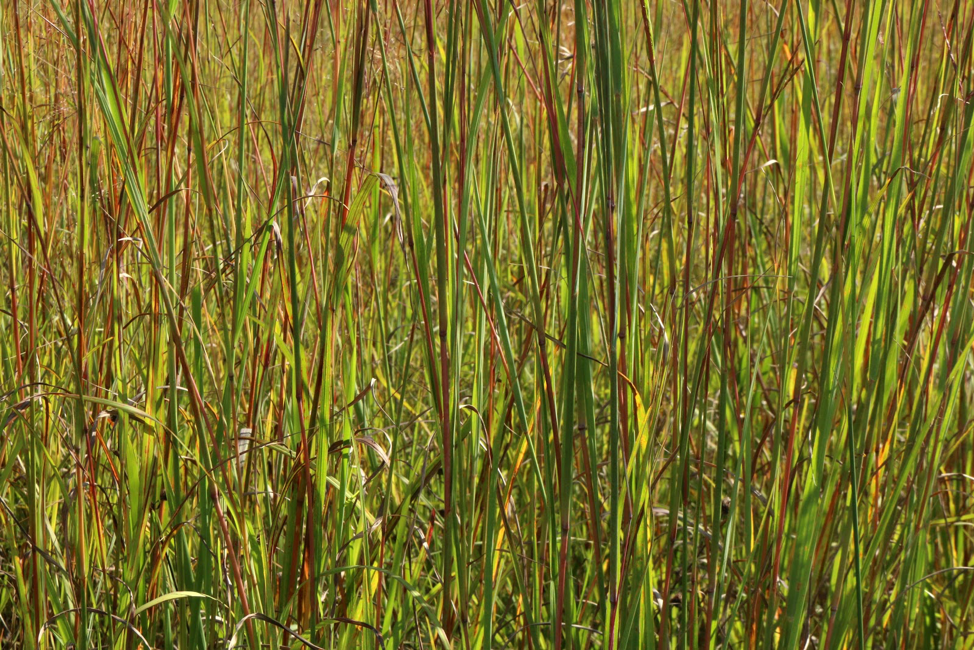
Goldenrod in one of the prairie plots.
Credit: E Zambello/LTER-NCO CC BY 4.0
Puffy clouds skirt the late summer sky, occasionally dumping a shower on our heads while Dr. Doug Landis and I walked between the crop rows at the Kellogg Biological Station (KBS) in Michigan. Breezes ruffled the soybean leaves like waves, but few insects or birds zipped through the sky above the crops. Near the corn fields, the same silence prevailed.
Continuing on, we reached a hectare plot of second successional prairie, bright goldenrod mixed with milkweed, big bluestem and more. The air practically vibrated with bees, butterflies, sparrows, dragonflies, and beetles. By comparison, the crop areas appeared almost sterile.
Studying the Ecology of Agriculture at Kellogg
The differing row crops and test plots are part of the long term ecological research network (LTER) site founded in 1987 to look at the ecology of agricultural systems. Today, KBS remains the only site dedicated to studies of crop systems in order to substitute better ecological management with the traditional chemicals farmers use on their crops.
Of course, agricultural fields never operate in isolation. Farms are surrounded by woods, or prairie, or development, all of which contribute to the success or failure of the crops. Prairie and grassland habitats remain on the decline in the United States, so the research team wondered: could farmers make up the gap on private land?

Rows of corn.
Credit: E Zambello/LTER-NCO CC BY 4.0
In the future, such prairie conservation strips could be a critical component of more sustainable agriculture. KBS has begun a new experiment to analyze the costs and benefits of such conservation strips in crop fields. Some are easy to quantify: are crop yields in surrounding fields higher or lower, do the farms use more or less water? But there are aesthetic benefits as well: as I found during my site visit to Kellogg, both the conservation strips and grass biofuel plots are more attractive than standard crop rows.
Farmers, Information, and Conservation
Braeden Van Deynze, a 4th year PhD student, studies the economics of these systems. As part of his research, Braiden sent thousands of surveys to area farmers to study how much they would accept either to plant conservation or biofuel strips.
Unsurprisingly, farmers who had actually seen these more diverse plots in action – whether at KBS or elsewhere – were more willing to plant the prairie or biofuel for less compensation. After all, these plots are beautiful! The first-hand experience between the different field types can affect the decision making of the farmers themselves.

A biofuel plot glows in the sun.
Credit: E Zambello/LTER-NCO CC BY 4.0
Adam Reimer took this idea a step further in survey and interview work for the Kellogg LTER. Studying farming decision-making patterns as well as information diffusion, he found that farmers often hire trained agriculture consultants to give them advice. These consultants then become preferred information conduits, including for conservation-related information, making them ideal candidates to come to KBS in person and learn about our LTER.
As the study continues, the diverse group of scientists will not only analyze data on the productivity of conservation and biofuel plots, but they will continue to work with stakeholders and consultants to bring the results of their experiments to the local farmers themselves. As an American, I depend on the food growth by these farmers to survive, but I also love the monarch butterflies, the sparrows, and the ladybugs that call these landscapes home. With the help of the KBS LTER, it’s possible we can have both!










